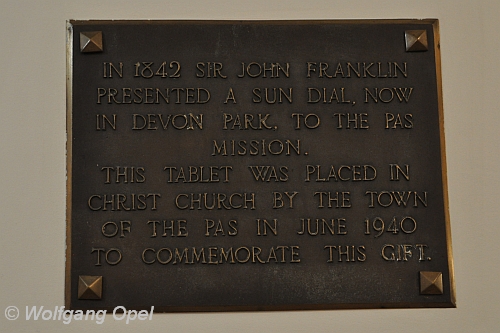… or Paskoyak, Basquiaw, The Paw, Opaskwayak
Reblogged from August 2018
Deutsche Version hier.
We had a tight schedule, a long way to go and not much time left, therefore we did not plan to visit the Sam Waller Museum in The Pas. But then, when we could not find Christ Church, which is an important historic building of the town, we still went into the museum to ask. Which meant that we stayed another 2 hours in that small town in Western Manitoba – and learned a lot more.
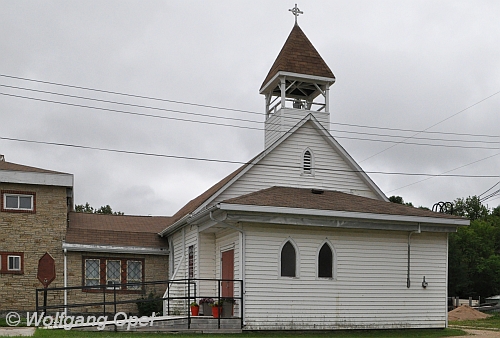
For centuries, members of the Cree First Nation lived here, mainly hunting and fishing. What is known in Europe about this place began with the then 19 year-old Henry Kelsey, probably the first non-indigenous who travelled the area when scouting the country for fur trading opportunities with indigenous people for his employer, the Hudson’s Bay Company (HBC). He wintered here in 1690. Kelsey, who worked many years for the HBC, had learned several indigenous languages. The long time lost journal of his expedition was discovered in Ireland in 1926.
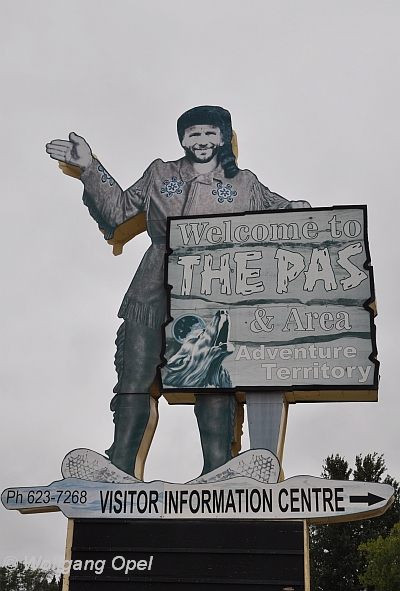
Half a century later, Montreal explorer Pierre Gaultier de La Verendrye and his sons explored much of the area which is now Manitoba. Here at the Saskatchewan River, they built the trading post Fort Paskoyak in 1743, but it operated only until the mid-1750s.
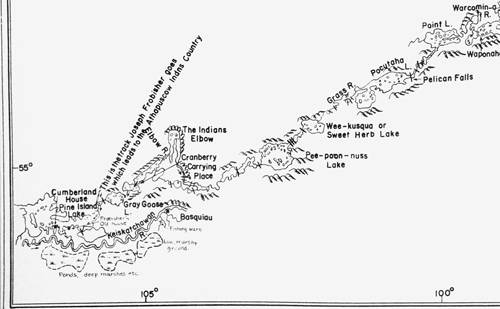
In 1774, the Hudson’s Bay Company sent Samuel Hearne, to establish their first inland trading post „at a site known as Basquia“ on the banks of the Saskatchewan River. Since Hearne found little suitable timber here, and because the local Cree people convinced him that there would be a more favourable place upstream, he finally built the post Cumberland House on Cumberland Lake. It lies – as the crow flies – only 60 km away from The Pas. On the Saskatchewan River, it might have meant about 100 km of rowing upriver. Today, although Cumberland House has road access now, from The Pas this is a 320 km drive one-way, mostly on a very rough gravel road. For us, this would have meant at least about 10 additional hours round trip by car … but, hopefully, we can visit this historically significant place next time?“
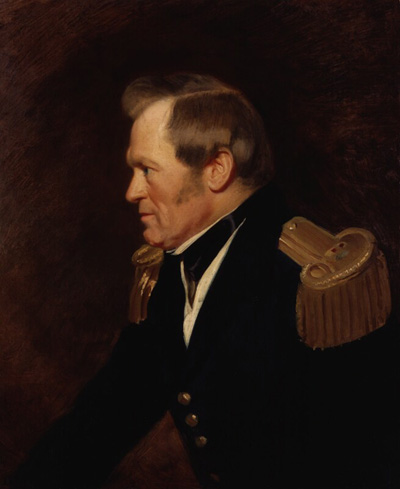
© National Portrait Gallery, London
Cumberland House was an important station for the Rae Richardson Expedition on their long way to learn about the fate of the lost Franklin Expedition – travelling overland to the Great Slave Lake, then on the Mackenzie River, finally tracing the coast between the Mackenzie and Coppermine rivers, as well as the shores of Victoria Island and the Wollaston Peninsula. To make sure that sufficient equipment and provisions were available for this long journey, an advance expedition, consisting of 20 skilled men and four big boats with additional supplies, left England already in 1847. Via Hudson Strait und Hudson Bay, these men reached Hudson’s Bay station Cumberland House, where they spent the winter.
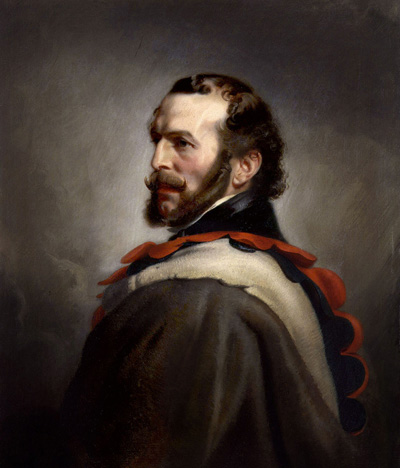
© National Portrait Gallery, London
During that winter, when mainly fishing and cutting firewood, these men were probably not fully stretched – and here Sa-ka-cha-wes’cam („Going Up the Hill“) comes into the game, a young Cree, baptized and christened Henry Budd. He started as a farmer, but soon dedicated his life to the temporal and spiritual development of the indigenous community; he was ordained as the first indigenous priest of the Anglican Church in North America.
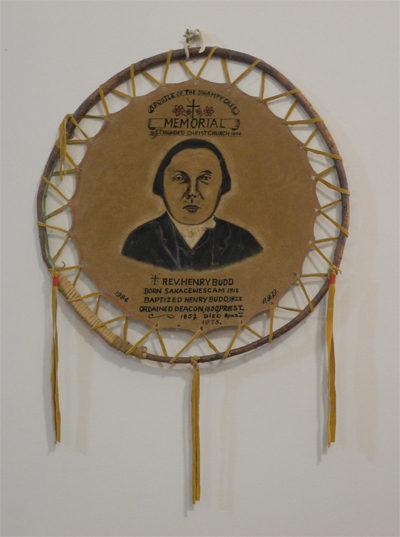
In 1840, Henry Budd, with his family, moved to Paskoyac, because he was sent to establish a mission station with the Cree people there. Soon numerous Cree children attended his school lessons. He also started a garden to improve food supplies for the community. In 1844, he was joined by the white Reverend James Hunter, who, however, received twice as much salary as Budd.
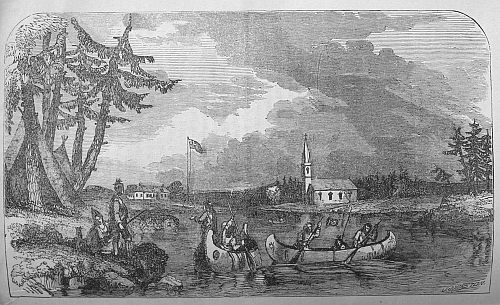
For the interior of the mission’s church, there was active help by the relief expedition of Rae and Richardson from the „neighboring“ Cumberland House. These skilled craftsmen, among them Robert McKie and James McLaren, built pews, railing, pulpit, baptismal font, prayer desk and tablets.
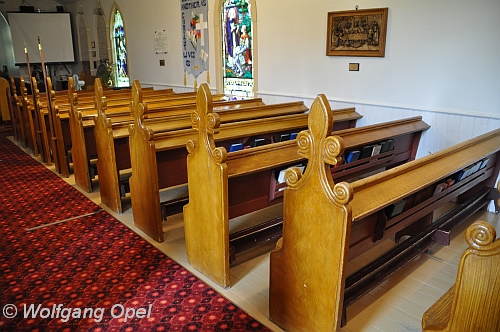
When we finally found the Christ Church in The Pas we were surprised to learn that this artful furniture from 1847 still adorns the church today, although now restored and in a renovated building. Here, for the first time we could see the 10 commandments printed in the syllabics of the Cree, in the translation of Sakachewescam alias Henry Budd. He has also translated hymns and parts of the Bible into Cree.
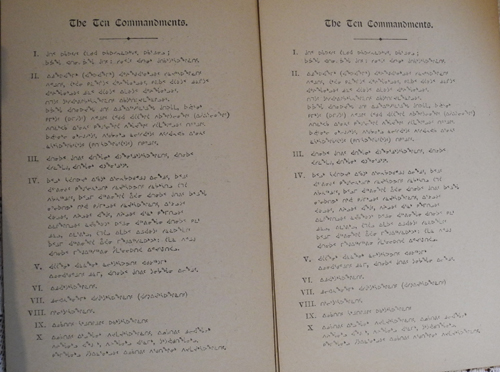
We were even more surprised when we learned that Rae and Richardson had been here themselves. Launched in March 1848 in Liverpool, they reached New York in April and shortly thereafter Montreal. A crew of Iroquois and Chippewa eventually brought them to Cumberland House. In the diary of the famous Canadian painter Paul Kane under the date June 12, 1848, the entry reads: „We arrived at the Paw (sic!) where my old friend, Mr. Hunter, … gave me a most hearty welcome … We met here Sir John Richardson and Dr. Rae, en route to Mackenzie River with two canoes in search of Sir John Franklin.“ No doubt, this must have been an interesting encounter!
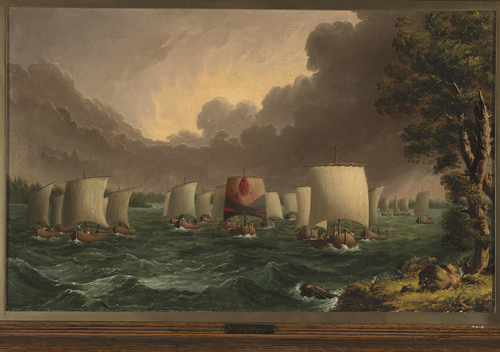
It gets even better: Sir John Franklin himself, too, had a personal relationship with today’s The Pas. On the overland Expedition of 1819, he traveled on the Saskatchewan River and wintered in Cumberland House.
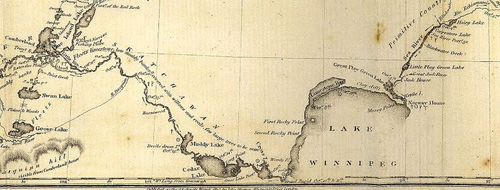
He also came here on the way there and back on the expedition 1825-1827. He had seen the Cree settlement Opaskwayak already in 1819, and later he recommended to the Church Missionary Society (CMS) to establish a mission here – which ultimately led to the establishment of the „Devon Mission“ by Sakachewescam alias Henry Budd.
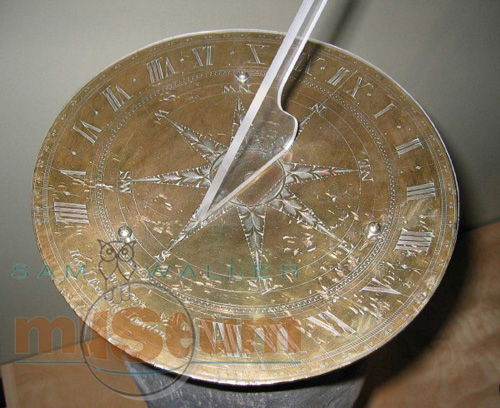
Franklin was impressed by this small „island of civilization“ in the wilderness, and his wife, Lady Jane Franklin, later sent a valuable gift to the Devon Mission (today’s Christ Church): a brass sundial. This sundial had its place in the small Devon Park in front of the church for a long time. But vandalism made it necessary to move it into the Museum — where it is now, safe and on permanent exhibit.
